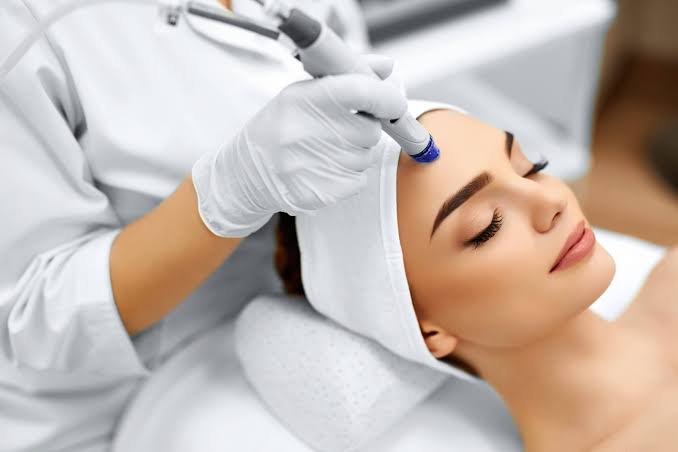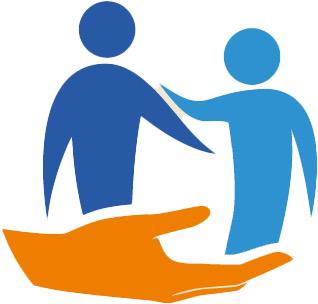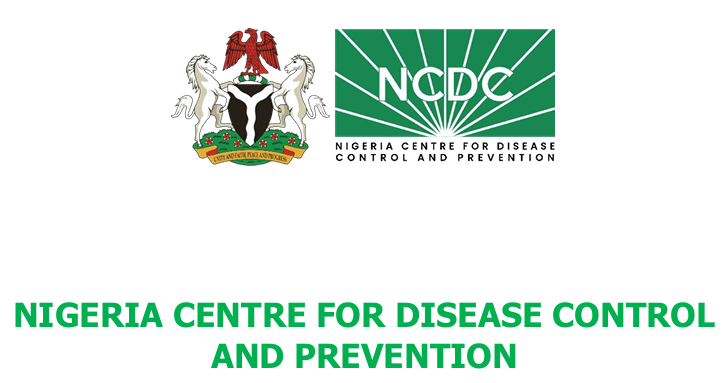HEFAMAA AND DERMATOLOGISTS, DENTISTS AND AESTHETICS PRACTITIONERS MINUTES OF THE MEETING

MINUTES OF THE MEETING BETWEEN HEFAMAA AND DERMATOLOGISTS, DENTISTS AND AESTHETICS PRACTITIONERS HELD INSIDE HEFAMAA CONFERENCE ROOM AT TISCO PLAZA, PLOT 6, ALHAJA ASHABI COLE STREET, CBD ALAUSA, IKEJA LAGOS ON 2ND OF MAY, 2024.
ATTENDANCE
- PRESENT
- Abiola A. Idowu – Executive Secretary; – CHAIRMAN
- Daniel O. Olayinka, – Head, Inspectorate Department, HEFAMAA;
- A.F.A. Jimoh – Head, Admin. & HR, HEFAMAA;
- O.A. Oredipe – Head, Legal Unit;
- O.O. Oladunni – Deputy Director, Education;
- F.O. Odude – Asst. Director, Nursing;
- Afolabi Ogunderu – Association of Private Dental Practitioners;
- Veronica Oguike – MD, Phoenix Aesthetics
- Folasayo Ayegbayi – LASCOHET, YABA;
- Chukwumah Emmanuel – PASCON;
- Okuku-Faith Omobolaji – PASCON;
- Felix Avajah – APSMAN;
- Ehiaghe Anaba – LASUTH/DAL;
- Olusola Coker – TPAN, Legal Adviser;
- Olushola Ojomo – TPAN;
- Ramat Alli Balogun – PASCON;
- Ayesha Akinkugbe – LUTH & CMUL/NAD;
- Osemeke Edike – Project Staff
IN ATTENDANCE
- E.O. Sofekun – Asst. Chief Admin. Officer (A&HR).
- COMMENCEMENT:
2.1. Meeting commenced at 11:30am. It was Chaired by the Executive Secretary, Dr. Abiola Idowu. The Chairman called for self-introduction of everybody at the meeting.
3.0. OPENING REMARKS/WELCOME ADDRESS BY THE EXECUTIVE SECRETARY, HEFAMAA.
3.1. The Executive Secretary in her opening remarks, provided a brief overview of the standards articulated. She spoke about the necessity for minimum certification, the gap left by migrating skilled personnel who have undergone training, the recognition of training, standards, and certifications. Additionally, she emphasized the importance of regulating cosmetologists’ activities, stressing that they must adhere to established guidelines. She noted that complaints have been lodged to the Agency regarding medical aestheticians exceeding the scope of their practice, thereby necessitating closer attention of the Agency. She mentioned that the Agency is looking forward to organizing a two-day seminar to increase awareness of the standards and scope of practice of the various categories of practitioners in Spa, Cosmetology and Aesthetics.
3.2. The ES spoke about having standing orders for procedures like Botox and glutathione injection, and the need for the clients to have knowledge of some of these processes for their safety. The seminar will also help the health workers know what actions to take should adverse reactions occur rather than being confused at such times.
4.0. RESPONSES TO THE CHAIRMAN ADDRESS
4.1. The president of Professional Association of Spa & Cosmetologists in Nigeria (PASCON), Mr. Emmanuel Chukwumah said the goal of the association includes safety and training. He added that the association is in partnership with CIDESCO for the training of the members. He added that the association had a conference recently which was aimed at ensuring health safety and quality. He further emphasized that there is a Federal Association which focuses on Spa and Cosmetology. He raised the issue of some practitioners who are applying wrong cosmetics to patients and causing harm to them in some Spas.
4.2. The Dermatologist from LASUTH, Dr. Ehiaghe Anaba emphasized that the human skin is delicate and once damaged, cannot be returned to its original state. She acknowledged the efforts of HEFAMAA at setting and enforcing standards. She also emphasized having a code of conduct and having the Ministry of Education scrutinize the training as well as register it. This provides HEFAMAA with the ability to recognize the set standards. When they register for a Spa, they should focus on the Spa and not go into other fields. She mentioned that they do a lot of things that are not regulated and make people end up in the hospital.
4.3. Dr. Folashayo Ayegbayi from Lagos State College of Health (LASCOHET) Yaba, also commended HEFAMAA for coming up with the meeting which he felt was long overdue. He explained the various roles of the college, working based on the directive of the Ministry of Education. He mentioned that the college runs in line with the state’s goal to ensure the practitioners are properly trained. He spoke about the intervention of the college in the training health workers such as Traditional Birth Attendants. He said what HEFAMAA is trying to do is to accredit centers on what they do and certify practitioners in their fields so as to monitor what they do. This is a welcome development and in the overall interest of the public. He said when you talk of professionals two things come to mind, 1. Certification which can be withdrawn when you go contrary or misbehave, and 2. Ethical code of conduct which states the dos and don’ts. He urged all the professionals practicing to have ethical Code of Conduct and embrace continuing education. Also, there must be oversight function, which is the role HEFAMAA is playing.
4.4. He emphasized on the standard of practice and certification of competence to certify that they are competent. He talked on the importance of code of ethics guiding conduct of members of the associations, the minimum acceptable standard, the mandatory continuing education and lastly an oversight function which HEFAMAA stands for to regulate who does what. He said the aesthetics medicine started 10 years ago in the country and the dermatologist needs to oversee the process; however, collaboration has not been forthcoming. He mentioned that there cannot be regulation without certification. Being the pioneer of aesthetics medicine, he spoke about the need for a regulatory body. He added that the training part has been achieved in Lagos State College of Health and there are 16 doctors currently undergoing training and will still do their internship. He said two to three-day trainings which are not in-depth are often organized in the UK and those people come down to practice it in Nigeria without having good understanding of the African skin.
4.5. Dr. Ayesha Akinkugbe LUTH&CMUL/NAD also thanked the management of HEFAMAA particularly the ES for creating the opportunity. She said, there is need to define Clinical Aesthetics, Medical Aesthetics etc. Once the definition is understood, it becomes easier to understand the role of the practitioners. She stated further that college of health technology has equipped every practitioner with basic knowledge, skills, machines and equipment. These equipment’s if not carefully handled can lead to secondary burnt on patients and destroy human skins. Therefore, there is the need to also regulate the scope of work machines and equipment so that everybody can work in collaboration.
5.0. CHAIRMAN’S REVIEW OF RESPONSES AND SUBMISSIONS OF THE SPEAKERS
5.1. The ES in her response said available standards already have details about the machines and that Doctors should read them. She spoke about the recognition and acceptability of certificates and licenses and that it is quite impossible to have due diligence with Aestheticians because some of their training is by apprenticeship or online training but that they should have a standard training from the College of Health Technology.
She stated further that Aestheticians cannot be regulated by NUC because it is a vocational qualification. She however recommend Lagos State College of Health. She also admitted that there are other health colleges in other states or private institutions that can be considered if the Ministry of Education in the States accept them.
5.2. Dr. Anaba emphasized that there cannot be monopoly. She asked how many training institutions are available? What is their qualification and curriculums? Do they have the backing of the ministry of education? The Chairman responded that the Lagos State College of Health was brought-in for standardization. She said the field is getting broader and that the standards HEFAMAA set was done by professionals.
5.3. Tattoo and Piercers Association of Nigeria (TPAN) President said he has been in practice for over 25 years and has witnessed so many mishaps during this period. He said hygiene and single use of needles are important. He said they need a regulatory body and standard of training for the people rendering this service. He said painters, sculptors, piercers are all part of the association. He said there are a lot of foreign people who do not understand the black skin practicing in Lagos and those who do laser treatment but are not dermatologists. This eventually leads to skin damage and people desiring to do another tattoo to cover up the skin damage. He wants the tattoo artist to have licenses to practice their work. He mentioned the need for the use of consent form for a guarantee of trust between the client and the artist. He said the training of individuals on how to do tattoo is going on in tattoo shops. He wants the tattoo artist to have a license, hence, training can occur through those shops. This will help with regulation.
5.4. Dr. Afolabi Ogunderu, Chairman of the Association of Private Dental Practitioners apologized for coming late. He gave an analysis of the number of available dentists which is inadequate. He added that this situation is however, not an excuse for quacks to encroach into the field of dentistry. He gave a case scenario of a psychologist who was attended to by a quack but whose case went bad. He added that the culprit who is an impersonator will go to jail. He said there is an ongoing system to automatically verify a doctor on walking into a facility even up to specialty level. He mentioned that professions are allowed to regulate themselves which is backed by law. He said the tattoo artist must come under the dermatologist and that even foreign certificates can be forged.
6.0. DISCUSSION ON ISSUES RELATING TO THE TRAINING OF AESTHETICIANS
6.1. The issue of CIDESCO was discussed. Dr. Felix Avajah disagreed with the recognition of CIDESCO. He said CIDESCO, which is just an association like APSMAN only teaches manual facials and not safety principles. According to him, he had rejected CIDESCO partnership in previous years. He elaborated on the definitions of Aesthetic medicine and who a Medical Aesthetician is and how they are confused with non-Aestheticians.
6.2. The ES stated the guiding principles for the seminar. She mentioned that HEFAMAA would report any error made by a practitioner to his regulatory council/board for discipline which is malpractice but if the person is not a practitioner, HEFAMAA can punish such persons. Mr. Osemeke Edike spoke about classifying these trainings into vocational and professional skillset and also adaption for those that trained abroad. He mentioned that not all has the capacity to operate at a professional level and the training has to be streamlined to accommodate all just like the pharmacy-pharmacy technician relationship. He also mentioned that adaptability of foreign trained using the CIDESCO body mentioned by the association of cosmetology president as an example. He also emphasized on the need for a base level, what to do for career progression for those who want to move higher or diversify in terms of skills acquisition and training.
6.3. The Head of Inspection and Monitoring Dr. Daniel Olayinka, elaborated on the categories of Aesthetics facilities. He said the facilities were broadly divided into those giving any form of injection and those not giving injectable medications. He said the facilities giving injectable medications need to have a nurse or doctor in the facility. Dr. Veronica Oguike said that the practitioners are the ones giving the injectables and not the nurses from the few visits that they have made. Hence, it seems as though the nurses or doctors are the supporting adjuncts to the professionals. Dr. Ogunderu Afolabi emphasized on the adequate verification of nurses. The HEFAMAA team replied that they are typically verified by presentation of their licenses. He queried the competence of nurses administering IV drugs. Dr. Ayesha Akinkugbe also gave a scenario in which a qualified nurse told her a story of how she quit a facility she was working for due to quackery resulting in harm to the patients. She said the qualified nurses are put on permanent day in the facility while the quacks work permanently at night.
7.0. DISCUSSION ON THE LICENSING OF PRACTITIONERS OF SPAS AND AESTHETICS.
7.0. The issue of licensing of the practitioners of Spas, Aesthetics and similar cadres was discussed. The ES advised the practitioners to lobby as a group so as to make it easy for them to have a licensing body established for them by the National Assembly. She added that working in factions will not favor the achievement of that objective. This will be beneficial to those of them who are certified.
8.0. RESOLUTION/ACTION PLANS
- To hold a meeting between the agency and the president of the tattoo artist and piercers association.
- To hold subsequent stakeholders meeting.
- To organize a seminar with the public and stakeholders of cosmetology, medical aesthetics and other categories of aesthetics practice in the state.
9.0 CLOSING REMARKS
9.1. The ES thanked everyone for honoring the invitation and for the active contributions during the meeting. She informed the president of TPAN that there would be another meeting between the Agency and his association. She emphasized more on the importance of holding the conference/workshop in the nearest future.
9.2. The meeting ended with the taking of photographs and refreshments by 1:38 p.m.



